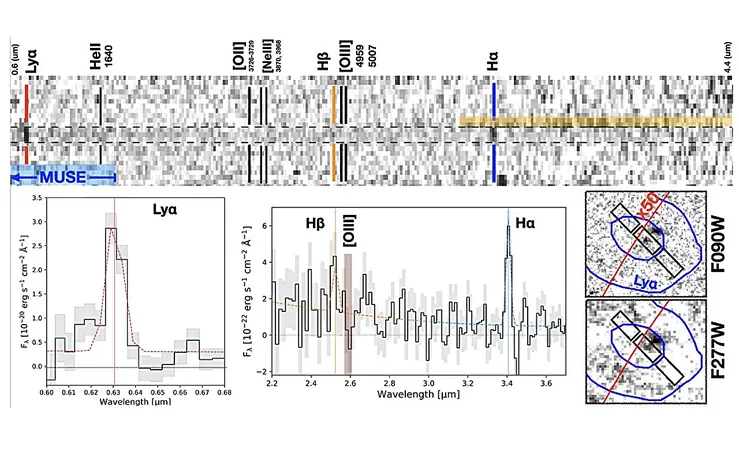
Breakthrough: Scientists Transform Graphene Defects into Superior Performance!
2025-09-20
Author: Arjun
Revolutionizing Graphene Production
In an exciting leap for material science, researchers have unveiled a groundbreaking method for creating graphene that actually turns structural defects into performance enhancements! This innovative discovery promises to impact a variety of fields, from advanced sensors to next-gen batteries and electronics.
The Power of Imperfections
A team of scientists from the University of Nottingham, along with collaborators at the University of Warwick and the Diamond Light Source, has developed a unique single-step process. They utilized a special molecule, Azupyrene, designed to mimic the defective structures they aimed to introduce into graphene. Their findings, published in the journal Chemical Science, reveal that what were once considered faults can now be leveraged for enhanced functionalities.
Dr. David Duncan, an Associate Professor and one of the principal authors, highlights the paradox: "While pristine graphene boasts impressive qualities, its lack of interaction with other materials hinders its use in crucial applications like semiconductors. By intentionally incorporating defects, we can boost its 'stickiness' for other materials and enhance its catalytic properties, making it a game-changer for sensors and electrical devices!"
Crafting the Perfect Defect
Graphene's structure resembles a flat arrangement of carbon atoms in hexagonal configurations. The intriguing twist involves introducing neighboring five and seven-carbon atom rings as defects. By manipulating growth temperatures while employing Azupyrene, researchers can precisely control the types and amounts of defects formed, transforming these imperfections into an asset.
A Step Toward Real-World Applications
In a significant technological milestone, researchers at the Graphene Institute in Manchester proved that their specially crafted graphene films can be successfully transferred to various surfaces without losing their beneficial defects. This breakthrough paves the way for integrating these advanced materials into practical devices.
A Collaborative Triumph
This incredible achievement was made possible through an international alliance, harnessing cutting-edge tools from the UK, Germany, and Sweden. Advanced microscopy and spectroscopy techniques, alongside powerful computational simulations on the UK’s national supercomputer ARCHER2, allowed them to investigate the atomic structure of the defective graphene and elucidate the repercussions on its chemical and electronic properties.
Professor Reinhard Maurer of the University of Warwick remarked, "By selecting specific starting molecules and optimizing growth conditions, we've unlocked the potential to engineer graphene with controlled imperfections. The intricate interplay of atomic-scale imaging and spectroscopy has been key to our success."
Dr. Tien-Lin Lee from Diamond Light Source concluded, "This study exemplifies the extraordinary advancements achievable through global scientific collaboration. By merging expertise across different countries, we have unveiled the atomic mechanisms of defect formation in graphene—an accomplishment unattainable by any single team alone!"


 Brasil (PT)
Brasil (PT)
 Canada (EN)
Canada (EN)
 Chile (ES)
Chile (ES)
 Česko (CS)
Česko (CS)
 대한민국 (KO)
대한민국 (KO)
 España (ES)
España (ES)
 France (FR)
France (FR)
 Hong Kong (EN)
Hong Kong (EN)
 Italia (IT)
Italia (IT)
 日本 (JA)
日本 (JA)
 Magyarország (HU)
Magyarország (HU)
 Norge (NO)
Norge (NO)
 Polska (PL)
Polska (PL)
 Schweiz (DE)
Schweiz (DE)
 Singapore (EN)
Singapore (EN)
 Sverige (SV)
Sverige (SV)
 Suomi (FI)
Suomi (FI)
 Türkiye (TR)
Türkiye (TR)
 الإمارات العربية المتحدة (AR)
الإمارات العربية المتحدة (AR)